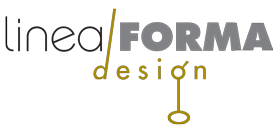I spent this past month working with a new client who is developing an innovative gel spring system that can be built into shoe insoles, bicycle seat pads, chair cushions and numerous other applications. My task was to show a shoe insert in use by creating a 3D model of a sneaker that closely resembled an actual shoe used in their existing live video footage, then overlaying my model with the footage, zooming in and looking inside the shoe and seeing the gel springs in action, while rotating the camera around the sneaker. Simple enough, you say? Oh no, not ever. With 3D, all my favorite projects challenge me to learn new techniques and solutions, and this was no exception.
Most uses of transparency involve fading out a front or outer wall of the model to let the viewer look at the parts and processes happening inside. The camera doesn’t move, only the active model parts move. Like all good magic, that leaves lots of places to hide “trick” things outside of view. However, this model used a moving camera revolving around the shoe as it, the foot, and the insole liner begin to fade and reveal the insole and springs in action. With multiple objects all semi-transparent, and changing their relative positions as the camera revolves around them, it was tricky making sure the transparency remained constant. It took many hours of technical correcting and tweaking to get the final video clip. Then there were those damn toes. If even one or two frames of the animation have several toes’ edges overlapping at odd angles, the result is a momentary flicker in the final movie. We can’t have that. I learned new ways to light and control the models, and the movie turned out great, and clearly showed the time and effort that went into it.
.
The second 3D model I made for the gel springs insole was an open-toe sandal. There was really no need to do the same level of trick animation again for this demo, since the sneaker animation already told most of the story. So, the sandal demo became a sort of exploded view animation in reverse, showing each component being applied to the sole, including the foot, and the light changing as the model becomes part of an environment. To do this, I made only eight high-resolution renders with the model, one for each component and one for the final lighting change, all in the same position. Then in post production (After Effects), I put them all on top of each other as layers and faded them together, one at a time for a blended animation effect. It’s not full animation, but it’s definitely animated, and much easier for adding descriptive text as the static layers change. A quick and easy solution to the storytelling.
.
For the first solution, you get true 3D and the full sense of being inside the scene with the functioning experience. For the second animation, the product is static and the sense of motion comes from layers progressively materializing to show the product components and how they relate to the sandal and foot. So, 450 frames for the first animation, 8 frames for the second one. Complex or simple. The story will determine the best path to look within.
Share this:


8 Responses
Gayle
Well that was cool! Loved seeing inside the shoe and under the foot. And the second one made me want to slide my foot right in there and try ’em out! Great descriptions. Nicely done as usual. Your clients must love you!
bgob1
Thanks, Gayle. I really enjoyed this one. Learned a lot too.
Jeffrey Hall
Giobbi 1, Always a pleasure to see,feel, experience your work. Top notch my friend!
bgob1
It’s mutual buddy. Right back at you.
Zoe
Very impressive! You have some mad skills my friend!
bgob1
It’s my life, Z. Hope you are doing very well.
Elisa
Incredible quality, and quantity, of work, Bill! You never cease to amaze with the ongoing development of skills you acquire by teaching yourself. Seriously!
bgob1
You are too kind, Elisa. I really love learning. Thanks.